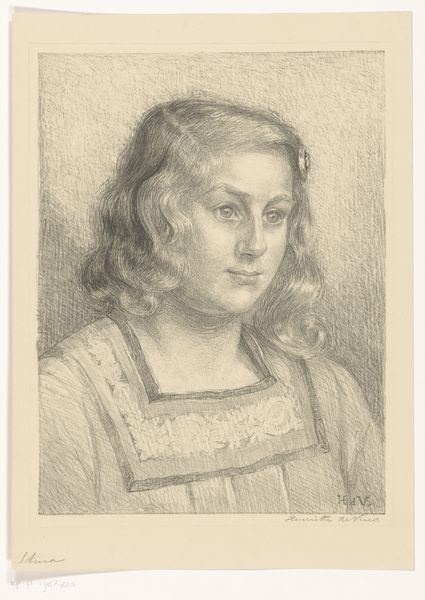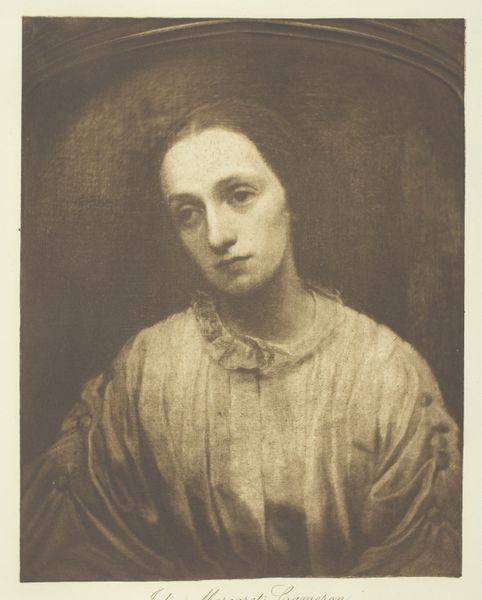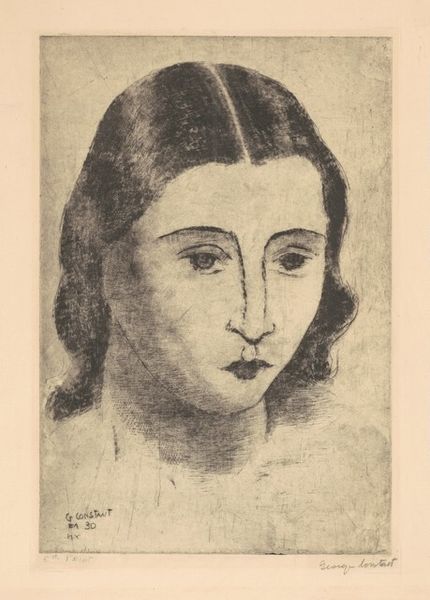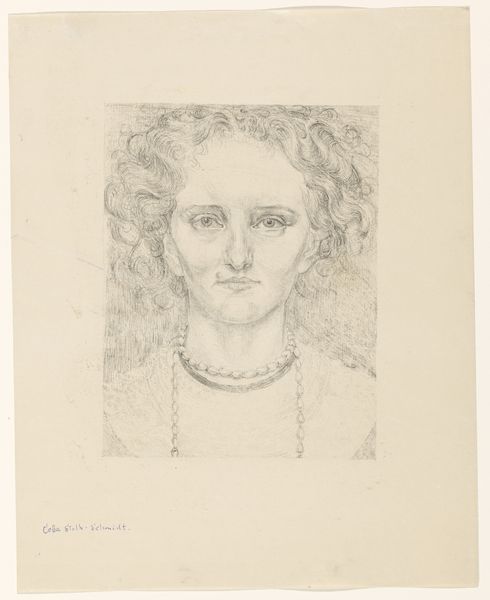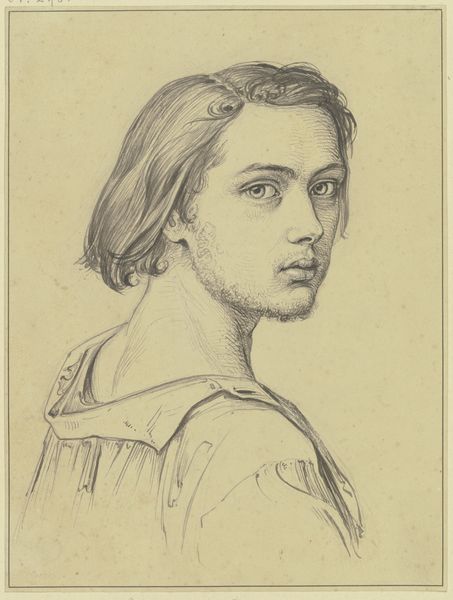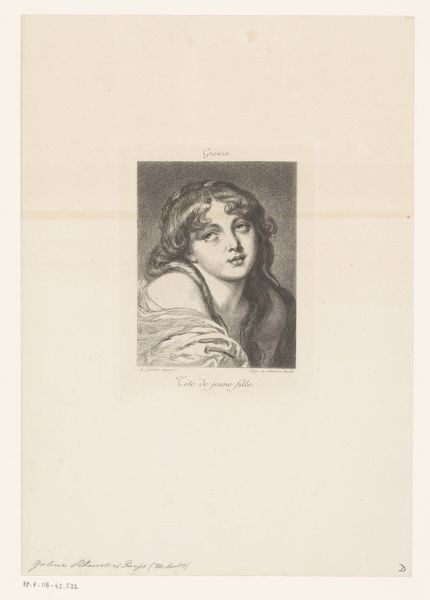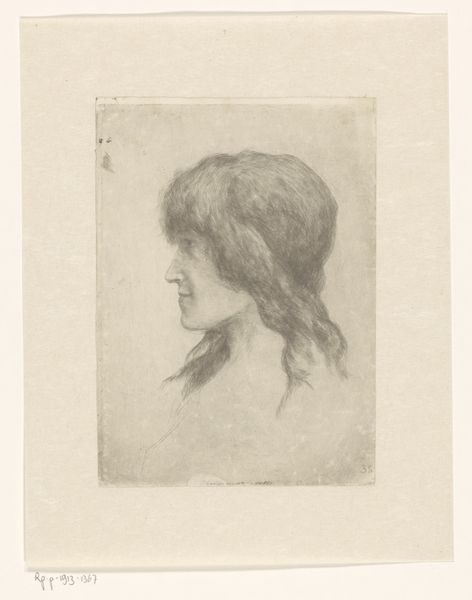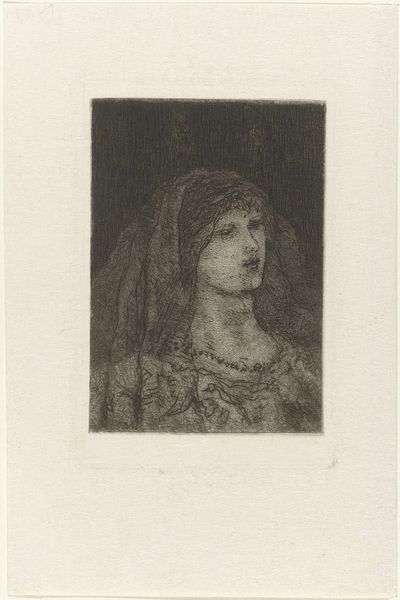
drawing, pencil, graphite
#
portrait
#
pencil drawn
#
drawing
#
pencil sketch
#
pencil drawing
#
pencil
#
graphite
#
portrait drawing
#
modernism
#
realism
Dimensions: height 425 mm, width 299 mm
Copyright: Rijks Museum: Open Domain
Editor: This is "Portrait of an Unknown Woman," a 1931 pencil and graphite drawing by Simon Moulijn, currently housed at the Rijksmuseum. The texture created by the pencil strokes gives it such an intense and almost brooding feel. What stands out to you in this piece? Curator: The composition immediately arrests the eye. Notice the deliberate framing – how the darkness surrounding the figure pushes her forward, focusing our attention on her face. Moulijn's masterful use of light and shadow is not merely representational; it constructs the very mood you perceive. Editor: The lighting definitely sets a tone. What do you make of the woman’s gaze? It’s quite direct. Curator: Precisely. The direct gaze is critical. It challenges the viewer, denying them passive observation. It also emphasizes a linear quality—how the light from above cascades onto her face, contrasting with the flat planes along the jaw. It is these elements that draw our attention not just to *what* is represented, but *how* it is presented. The interplay is a very careful arrangement of positive and negative space. It gives definition and contributes to her direct engagement with the viewer. Editor: I see what you mean. So, rather than thinking about who she might be, you're drawn to *how* the image is constructed to create a feeling? Curator: Exactly. It's not about narrative, but about form. What meaning derives from its materiality? How are line, shade, and composition communicating here? Consider what shifts within the portrait once we focus on that instead of its potential symbolism, and we can begin to grasp the pure genius. Editor: That makes a lot of sense. Thanks for sharing that perspective! Curator: My pleasure. It’s always enlightening to analyze how formal qualities dictate meaning and reception.
Comments
No comments
Be the first to comment and join the conversation on the ultimate creative platform.
